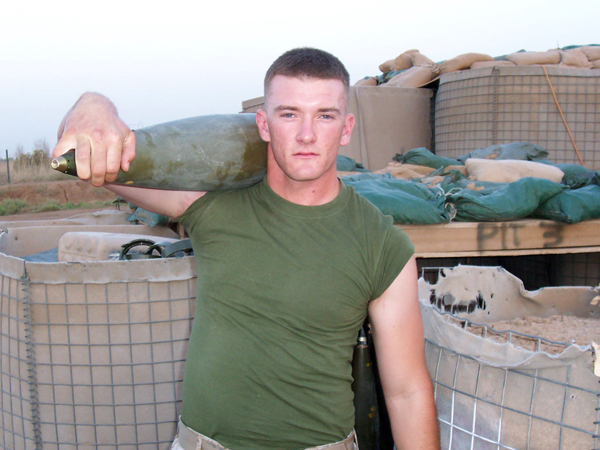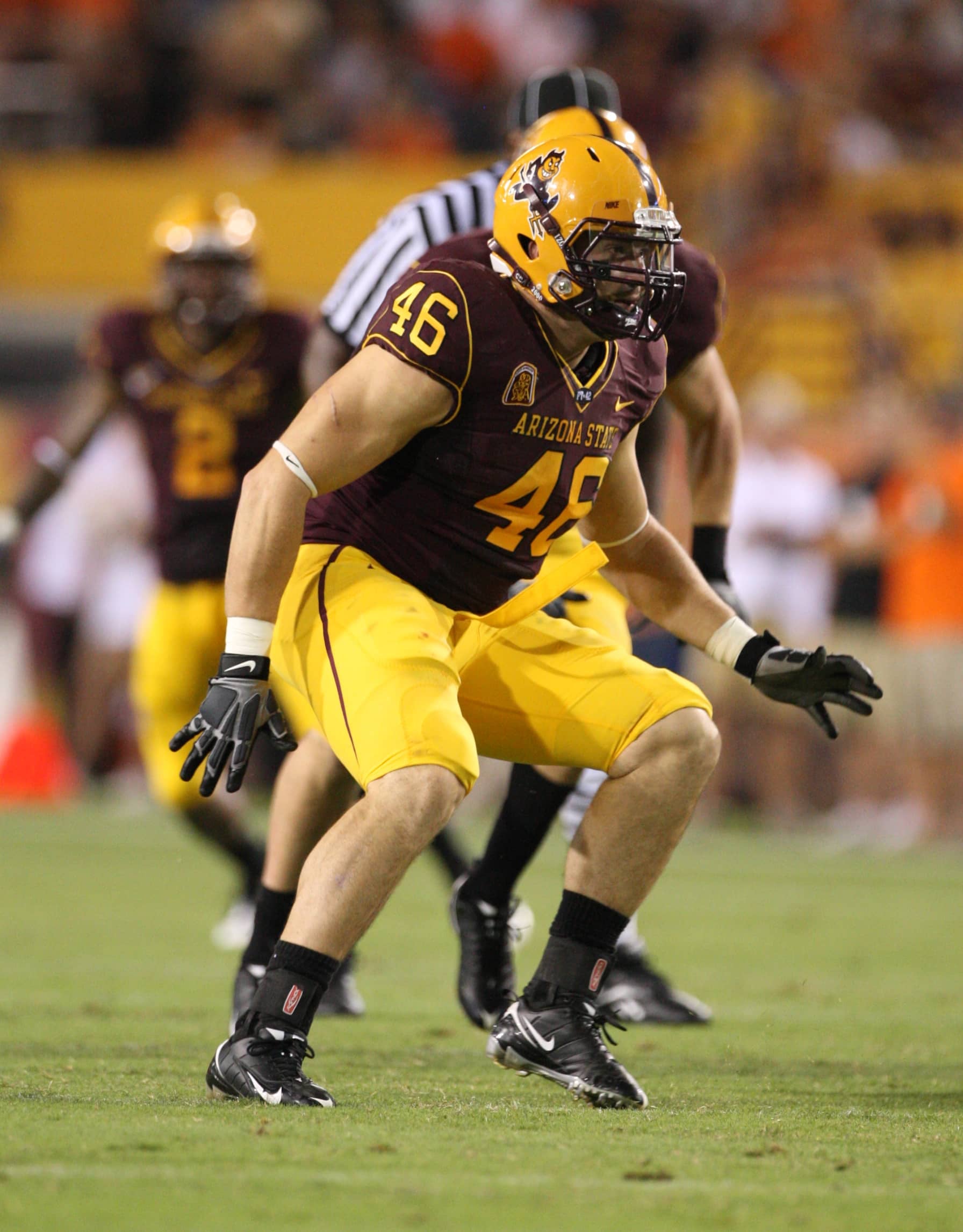Through decades of proud patriotism, ASU Athletics has stood shoulder to shoulder with our nation’s military heroes, past and present, in a shared commitment to honor, excellence and sacrifice through our military history and traditions.
From time-honored Game Day salutes to year-round tributes, we celebrate the courage of those who serve with heartfelt gratitude and unwavering respect.
Salute to Service
Those who volunteer to serve in our nation’s military or within their local communities are often driven by a deep commitment to help protect and serve.
Arizona State University proudly honors these brave individuals who put service before self in their personal and professional lives. That’s the spirit behind our Salute to Service.
Join Sun Devil Athletics in proudly honoring the brave and selfless individuals and their families who have served or are currently serving in the military and others who dedicate themselves to serving their communities in diverse roles.
Pat Tillman’s legacy
One of the most honored and respected student-athletes in the history of college athletics, Pat Tillman, was the definitive Sun Devil during his career in Tempe and beyond. Tillman was committed to excellence in all he did, emerging from primarily a special teams player to the 1997 Pacific-10 Conference Defensive Player of the Year, a First-Team All-American and a two-time Academic All-America selection.
A scholar and a leader, Tillman graduated from ASU with a 3.84 GPA as a marketing student in just three and a half years before again exceeding expectations by setting the single-season record in tackles as a member of the NFL’s Arizona Cardinals despite being selected in the final round of the 1997 NFL Draft.
Motivated by the terrorist attacks of Sept. 11, 2001, Tillman turned down a multimillion-dollar NFL contract to retire from football and enlist in the United States Army with his brother, Kevin, in 2002. After he deployed to Iraq, Tillman later served in Afghanistan, where members of his unit mistakenly shot and killed him in a fratricide incident in 2004 at age 27.
After his death, Tillman was a posthumous Purple Heart recipient, and the Pat Tillman Foundation was created in his honor by family and friends to promote his values and ideals while providing college scholarships to service members and their families. The Foundation’s signature charity event, “Pat’s Run,” began in 2005 and now attracts nearly 30,000 annual participants across the United States.
The College Football Hall of Fame inducted Tillman in 2010.
Pat Tillman Foundation and run
After his death, Tillman was a posthumous Purple Heart recipient. The Pat Tillman Foundation, created in his honor by family and friends in 2004, promoted his values and ideals while providing college scholarships to service members and their families. The Foundation’s signature charity event, “Pat’s Run,” began in 2005.
The 4.2-mile run and .42-mile kids' run attract more than 30,000 people yearly. Proceeds directly benefit the Tillman Military Scholars, a program supporting educational opportunities for service members and military families by bridging the financial gaps left by the Post-9/11 GI Bill.
Sun Devil Football military history
Arizona State’s proud history of military service by football players dates back to the program’s early years.
Spanish-American War
In 1898, three players were members of the first United States Volunteer Cavalry in the Spanish-American War, otherwise known as Theodore Roosevelt’s “Rough Riders.” Crantz Cartledge, Oscar Mullen and Jack Stelzriede, football team members in the late 1800s, served with Roosevelt’s Rough Riders, a cavalry primarily consisting of Native Americans, college athletes, cowboys and ranchers.
Cartledge and Mullen played the first two known years of football at Territorial Normal School at Tempe, with Cartledge starting at tackle on the school’s first officially recorded season in 1897. After his two athletic seasons in Tempe, Cartledge, at age 20, volunteered for the Rough Riders in May 1898.
Mullen played center as a senior on ASU's first football team in 1896 before joining the Rough Riders. After just four months of service, Mullen made the rank of corporal. He became a member of the Arizona Rangers in 1903. After leaving a cowboy life behind, the Territorial Normal School graduate became a Tempe Union High School trustee in 1909. A few years later, Mullen was Florence's postmaster and school principal. He finished his career as superintendent of schools in Jerome and retired in 1949.
Stelzreide left Tempe at age 21 in 1898 and became Rough Rider Troop C's trumpeter in September 1899. Upon his return, Pvt. Stelzreide suited up at fullback for Tempe Normal’s undefeated 1899 squad — the first to defeat rival Arizona and win the first-ever Territorial Cup.
World War I
As Tempe Normal football pushed into the 20th century, members of the football program continued to be compelled into military service, including Robert Finch and Aaron McCreary, both soldiers in World War I. Finch, who rose to the level of first lieutenant, played in Tempe from 1914–15, while McCreary, who came to Tempe Normal after his service, ultimately became the school’s winningest head coach of the program’s first half-century with a 25-17-4 record from 1923–29.
World War II
Approximately three dozen known Arizona State football players fought in World War II, including:
- Sidney Anderson
- Ted Anderson
- Bob Baccus
- Art Bunger
- Bob Buntz
- Dom Campolo
- Francis Clevenger
- Anson Cooper
- Claude Duvall
- Joe Garcia
- Harold Herty
- Albert Huber
- William Hudgens
- Glenn Johnson
- Max Julian
- Heber Kleinman
- Frank Komadina
- Robert Lackey
- Tom Lillico
- J.B McDonald
- Jim Montgomery
- Ira O’Neal
- Wendell Patterson
- Ralph Peckovich
- Dom “Rocky” Pellicino, Jr
- Clayton Peterson
- Rex Phelps
- Noble Riggs
- Henry Rockwell
- Barney Rouse
- Bill Saunders
- Czeslo Schmidt
- Clyde L. Smith
- Williard Smith
- Morrison Warren
Harold Herty, William Hudgens, Heber Kleinman, Robert Lackey, Dom Pellicino, Clayton Peterson, Barney Rouse and Williard Smith gave the ultimate sacrifice, losing their lives in action during World War II.
Initially drafted into the 1st Army Corps in 1942, Ira O’Neal served as a first lieutenant in the 42nd Aviation Squadron and was a pioneering member of the all-African American “Tuskegee Airmen” squadron, the first African-American military aviators in the history of the United States armed forces.
O’Neal re-enlisted with the United States Air Force in 1949, where he proudly served his country until he retired in 1972. After retiring, he started a security service that contracted with the Watergate apartment, and ultimately, it was O’Neal’s report that started the Watergate episode. In 2004, O’Neal received the Roots in Scouting Award, recognizing a lifetime of work with the Boy Scouts of America.
In 2007, O’Neal and the other Tuskegee Airmen received the Congressional Gold Medal, the highest civilian award that Congress bestows. It is given to an individual who performs an outstanding deed or act of service to the security, prosperity and national interest of the United States.
Morrison Warren was a pioneer in many ways during his multi-decade connection with Arizona State. During service in WWII, Warren, while driving an officer to Buchenwald Concentration Camp in Weimar, Germany, was forever compelled to a life of public service after he witnessed the inhumanities suffered by thousands of Holocaust victims. Upon his return to Tempe, Warren became one of the program’s first African-American football players and the team’s leading rusher in 1946.
In 1959, Warren earned a doctorate from Arizona State and spent his career as a respected teacher and administrator in the Phoenix area and a professor in ASU’s College of Education. Additionally, he was the first African-American to be elected to the Phoenix City Council (1966–70) and the first to be elected President of the Fiesta Bowl (1982).
Ted Anderson and Anson Cooper were the most highly decorated servicemen of the group in WWII. Anderson earned a Bronze Star, and Cooper was awarded the Distinguished Service Cross and Silver Star.
On the football field, Noble Riggs earned All-Border Conference honors at guard in 1939, while Jim Montgomery, a member of ASU’s Sports Hall of Fame, was a two-time All-Border Conference recipient at end in 1946 and ‘47 after serving in WWII. Montgomery led the nation in receiving in 1946 with 32 catches for 399 yards, and he later became Arizona State’s first post-WWII National Football League draftee. Both Riggs and Montgomery served as team captains during their time in Tempe.
In addition to the player service, head coach Dixie Howell fought in WWII after leading the football program from 1938–41, as did Hilman Walker, the main assistant under Howell and head coach in 1942. Also, before beginning his eventual Hall of Fame coaching career at Arizona State, Dan Devine served as a B-29 flight officer in the Army Air Corps.
Bill Kajikawa, one of the most legendary Sun Devils in school history, lettered in football from 1934–36 before enlisting with the 442nd Regimental Combat Team, which was manned entirely by Japanese Americans and was the Army's most-decorated combat unit in World War II. Kajikawa, the namesake for ASU’s outdoor football practice facility, coached football, basketball and baseball over five decades before retiring in 1978
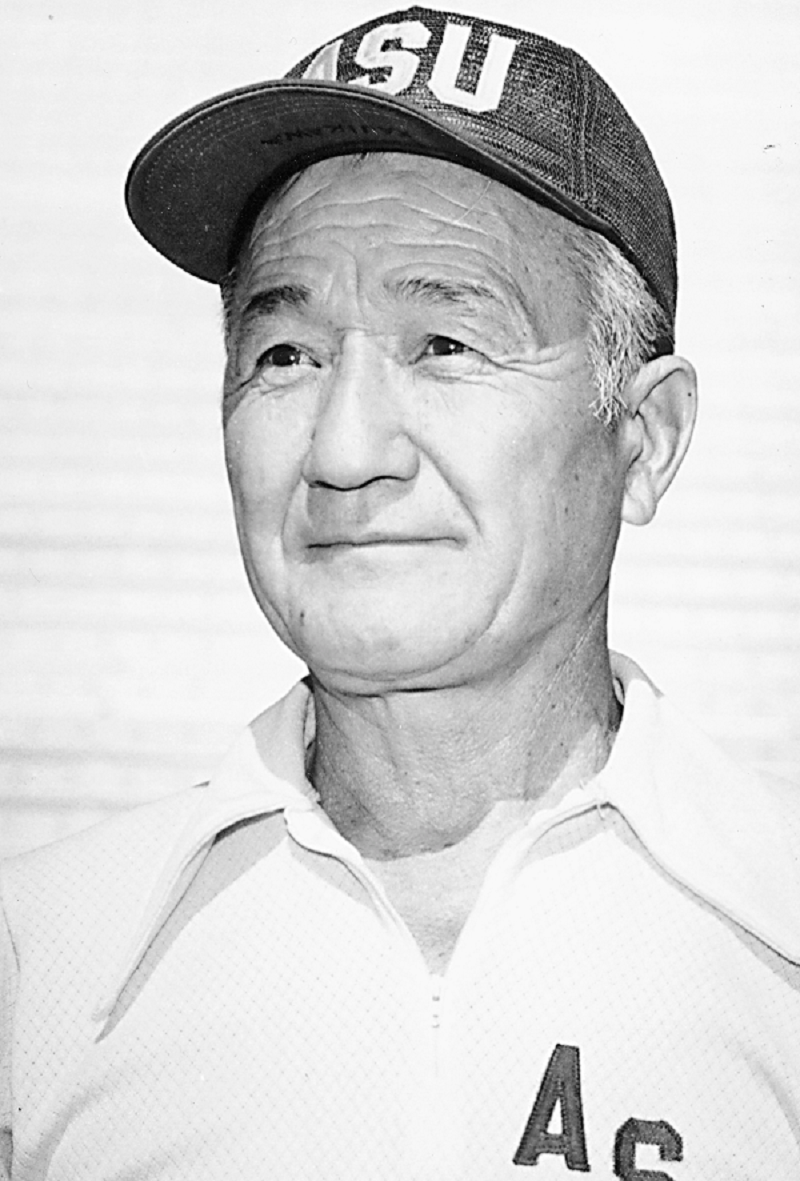
1950s
In addition to military service, the following played football for the Sun Devils in the 1950s, a pivotal period of tremendous growth and success for the football program and ASU as an academic institution.
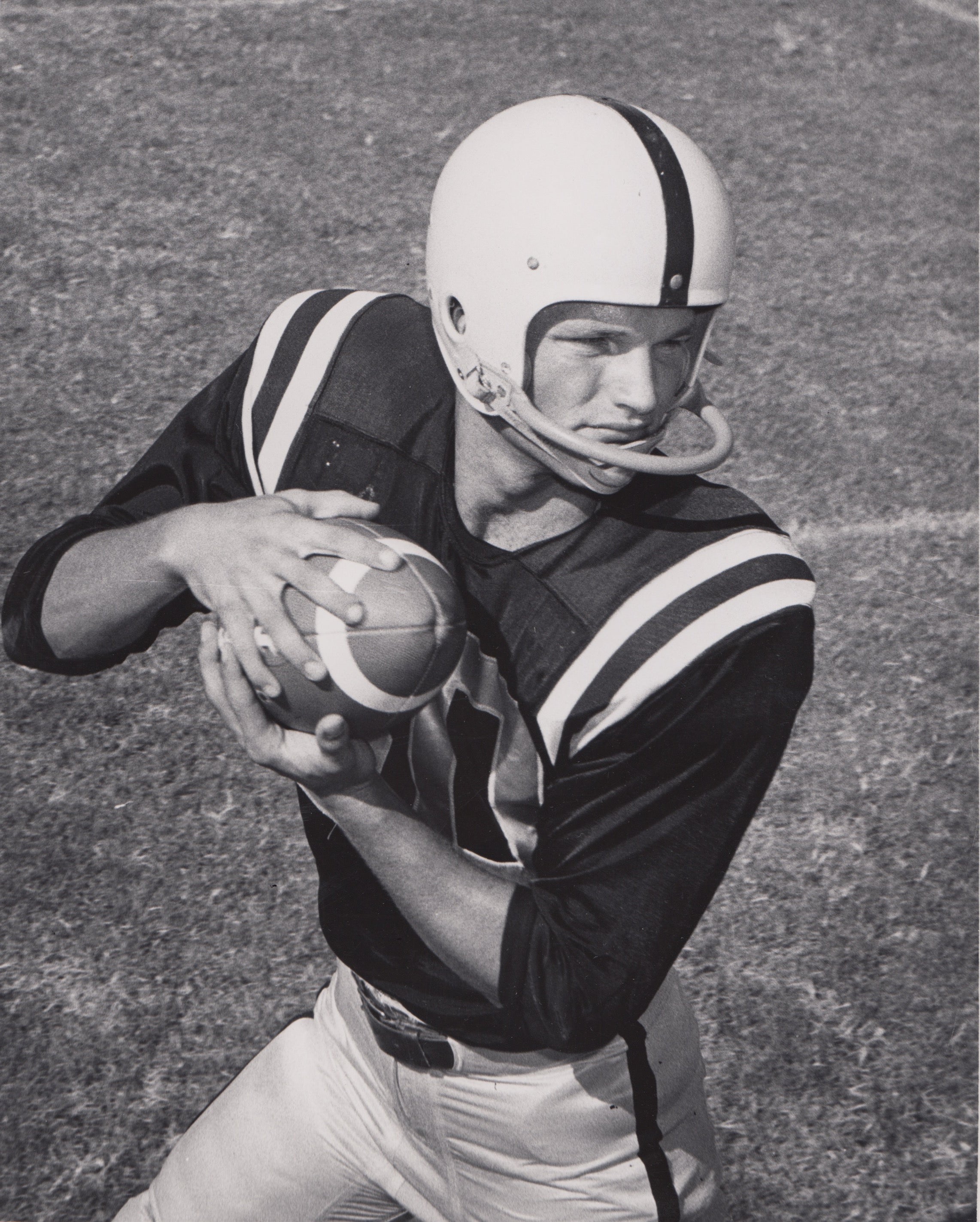
- Karl Kiefer
- Joe Matesic
- Manuel Muniz
- Richard Napolitano
- Danny Seivert
- Ivan Vucichivech
- Frederick Yuss
- Jake Davis
- Richard Davis
- Gino Dellalibera
- Albin Debris
- Tom Futch
- John Gumpf
- Clifford Jensen
Sun Devil legend Frank Kush served in the United States Army in the 1950s and rose to the rank of first lieutenant. During this time, he also tried his hand at coaching football as he mentored the team at Fort Benning. This experience led to an All-American career as an offensive lineman at Michigan State and a coaching career at Arizona State, earning him a spot in the College Football Hall of Fame.
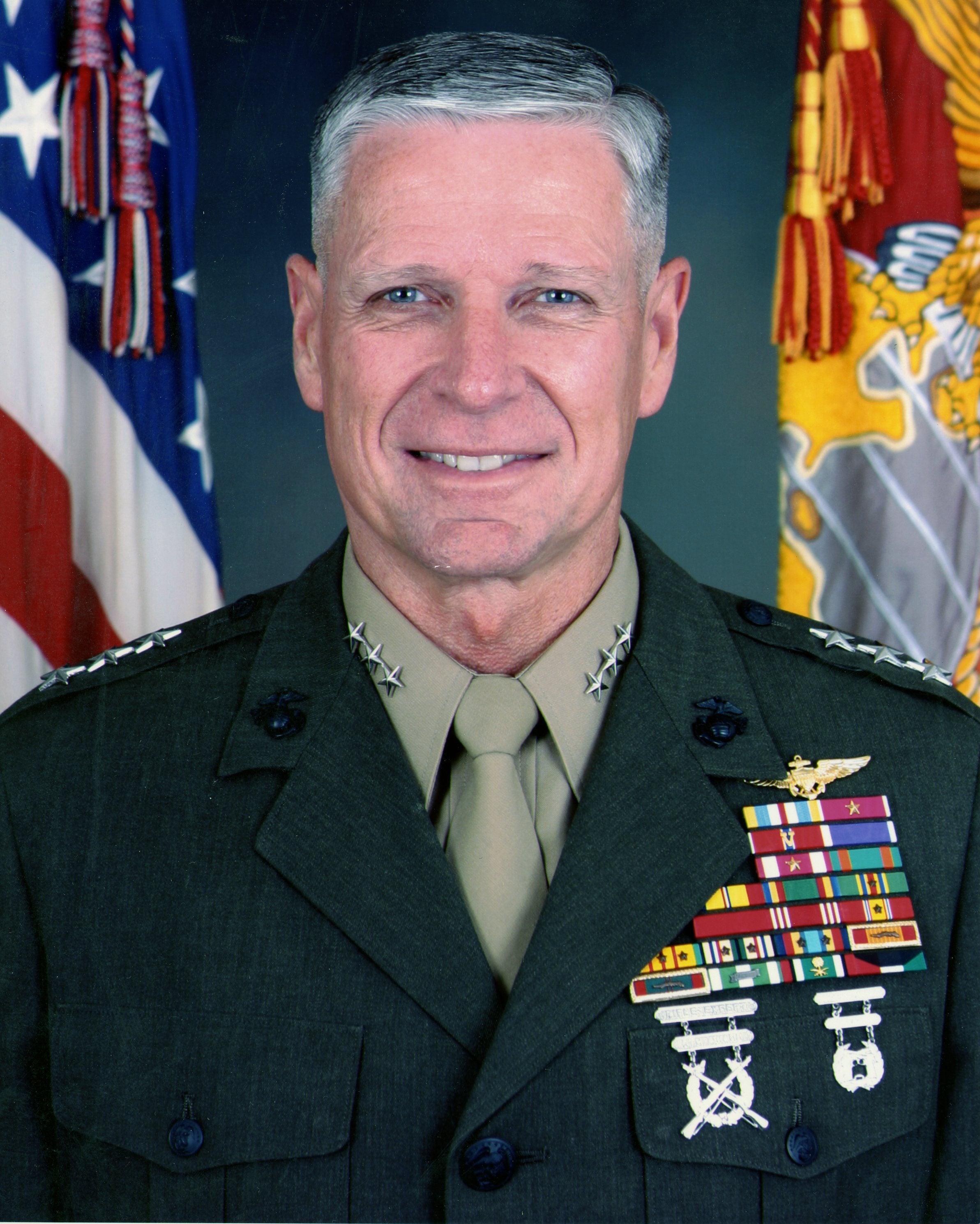
John Goodman, ASU’s starting quarterback and leading passer in 1965 and 1966, graduated in 1967. He began his illustrious military career with the United States Army as a Long Range Reconnaissance Patrol Team member in the Republic of Vietnam. He earned a Bronze Star with Combat "V" and the Soldier's Medal while in Vietnam.
After a brief stint with the NFL’s New Orleans Saints, Goodman entered the United States Marine Corps in 1971. Over a military career that lasted nearly 40 more years, he was promoted to the rank of lieutenant general while earning additional awards such as the Navy Distinguished Service Medal, the Defense Superior Service Medal (twice), the Legion of Merit (twice), the Soldier’s Medal and the Purple Heart.
Before he retired from the military in 2008, Lt. Gen. Goodman’s Marine Corps resume included prestigious leadership roles and service as:
- Naval aviator
- Forward air controller
- Operations officer
- Director of safety
- Standardization and tactics
- Assistant division air officer
- Executive officer
- Assistant group operations officer for Marine combat crew readiness
- Group operations officer
- Director of the School of Advanced Warfighting
- Brigadier general
- Director, strategy, policy and plans of United States Southern Command
- Commander
- Marine Forces Korea
- Assistant chief of staff
Jim Kane earned First-Team All-Western Athletic Conference recognition at left guard in 1968, while Edward Gallardo Jr. was ASU’s kicker for the program’s first WAC champion team in 1969.
Edward Smith, Jack Schram and Michael Skala were members of the Sun Devil Football program in the 1970s and ’80s. Smith played for the 1970 WAC title and Peach Bowl champion team, while Skala was a member of ASU’s historic Pacific-10 Conference and Rose Bowl champion squad in 1986.
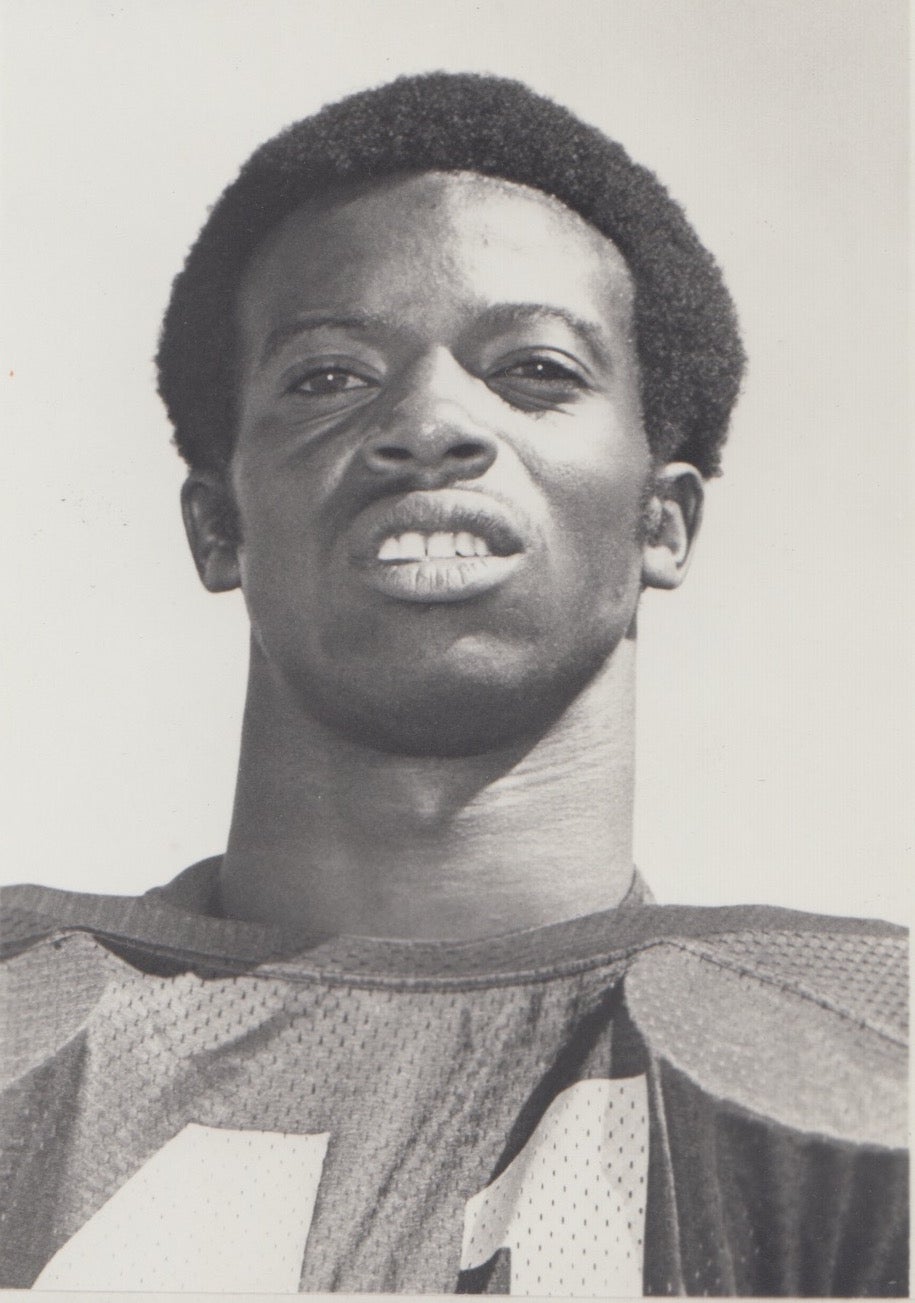
1990s
In the 1990s, a trio of student-athletes who helped guide the Sun Devils to the 1996 Pacific-10 Conference Championship and a berth in the 1997 Rose Bowl earned First-Team All-America honors on the football field and served in the military. Derrick Rodgers, Jeremy Staat and Pat Tillman.
After service in the United States Air Force, Derrick Rodgers came to Arizona State for the 1996 season and was one of the nation’s most dominant defensive ends. A force on ASU’s Pac-10 champion team, Rodgers set a school record with 24 tackles-for-loss while collecting 12.0 sacks, the second-most in Sun Devil history at the time. A third-round pick in the 1997 NFL Draft, Rodgers played eight professional seasons with the Miami Dolphins and New Orleans Saints.
Jeremy Staat was one of college football's most fearsome defenders in 1997, earning the Morris Trophy as the Pac-10 Conference’s top defensive lineman while also netting First-Team All-America recognition by the Football Writers Association of America. After being selected 41st overall in the 1998 NFL Draft, Staat played four seasons before being motivated by Tillman’s death to enlist in the United States Marine Corps. He deployed to Iraq in 2006.
Staat returned to ASU to complete his undergraduate degree in 2009. In 2012, he joined a fellow Veteran on a cross-country “Wall-to-Wall Bicycle Ride” from Bakersfield, California to Washington, D.C. to support Veteran organizations, promote Veteran suicide awareness and help fight childhood obesity.
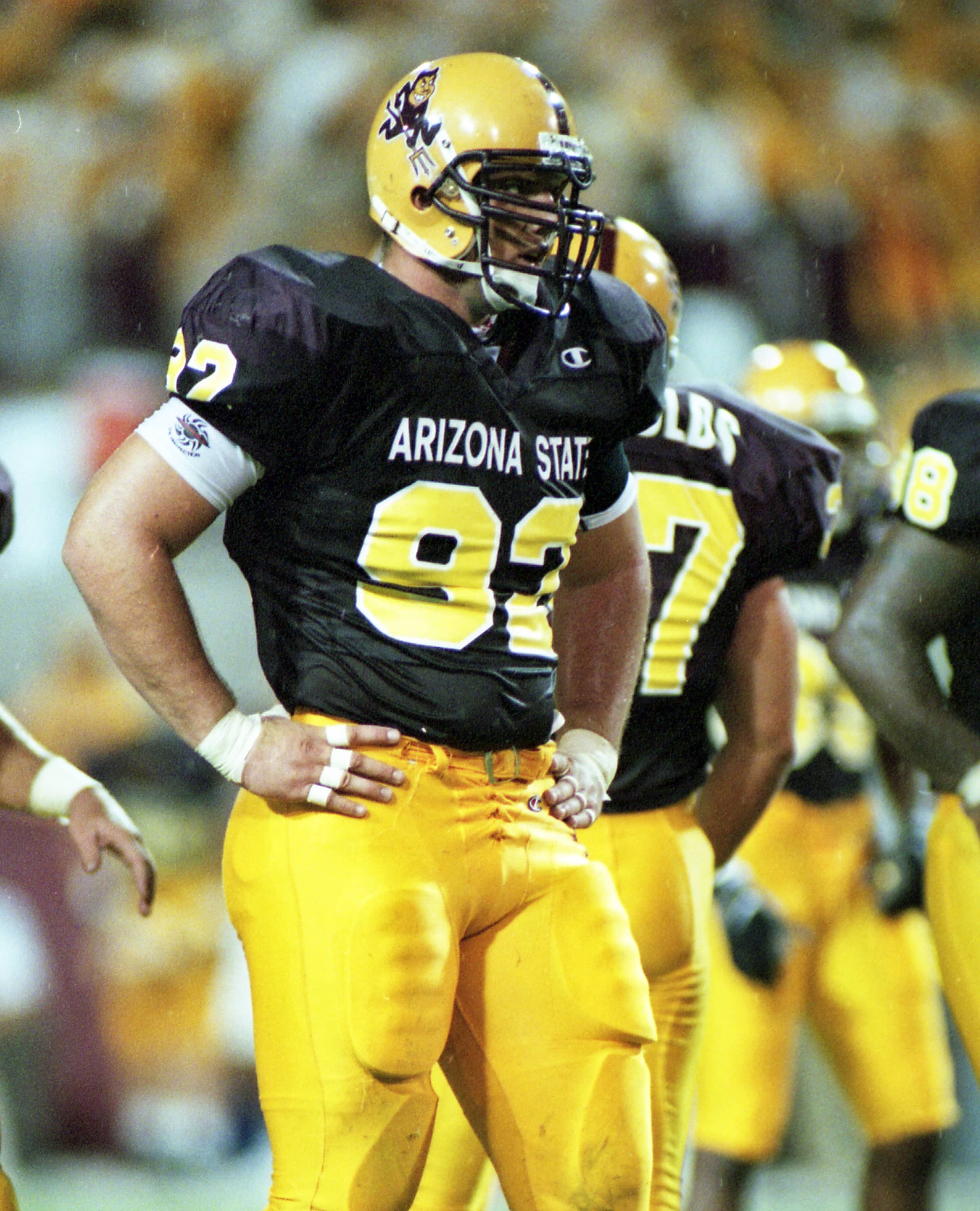
2000s
In 2009, Dean DeLeone came to ASU after service with the United States Coast Guard and was one of the team’s top defensive ends for two seasons.
Jake Sheffield, a member of the Golf Battery, 2nd Battalion, 11th Marines, served two tours in Iraq and signed with the Sun Devils as a member of head coach Todd Graham’s first recruiting class in 2012.
